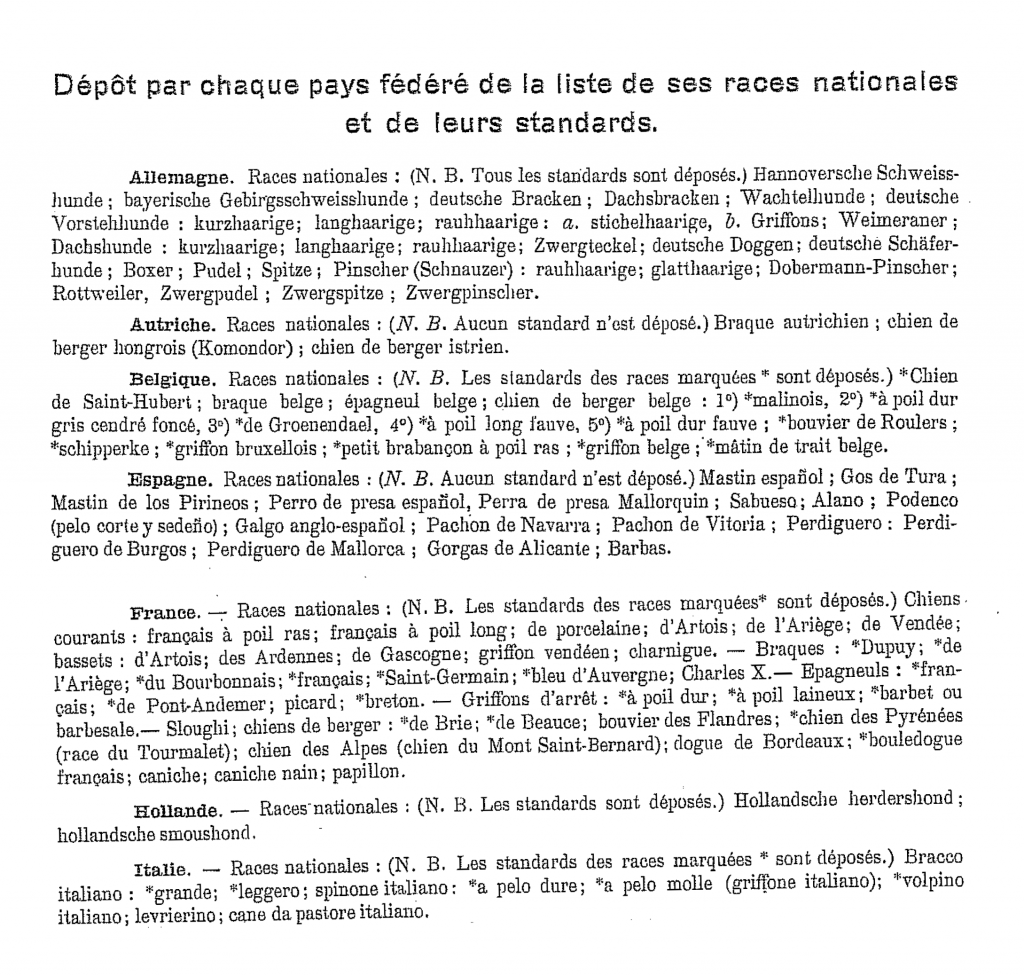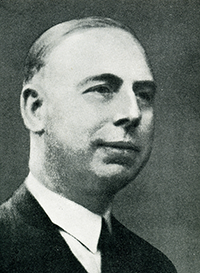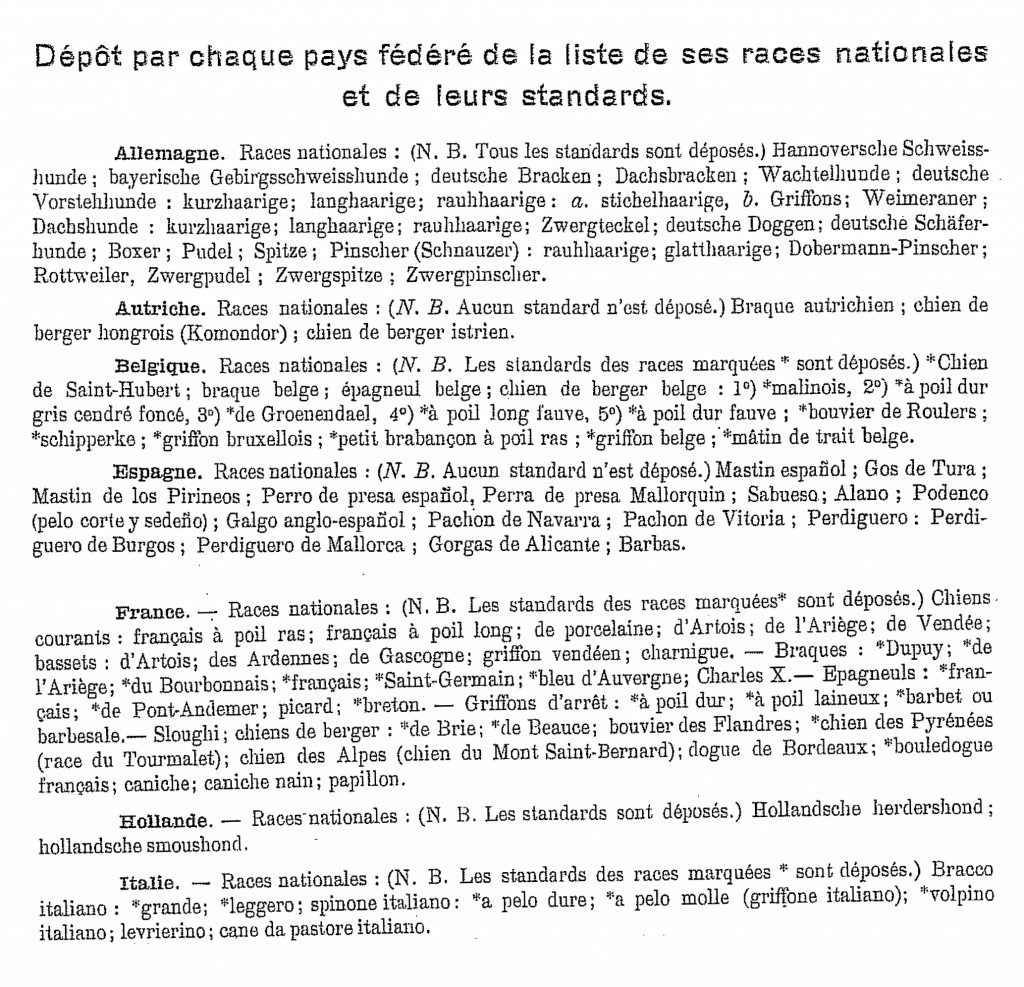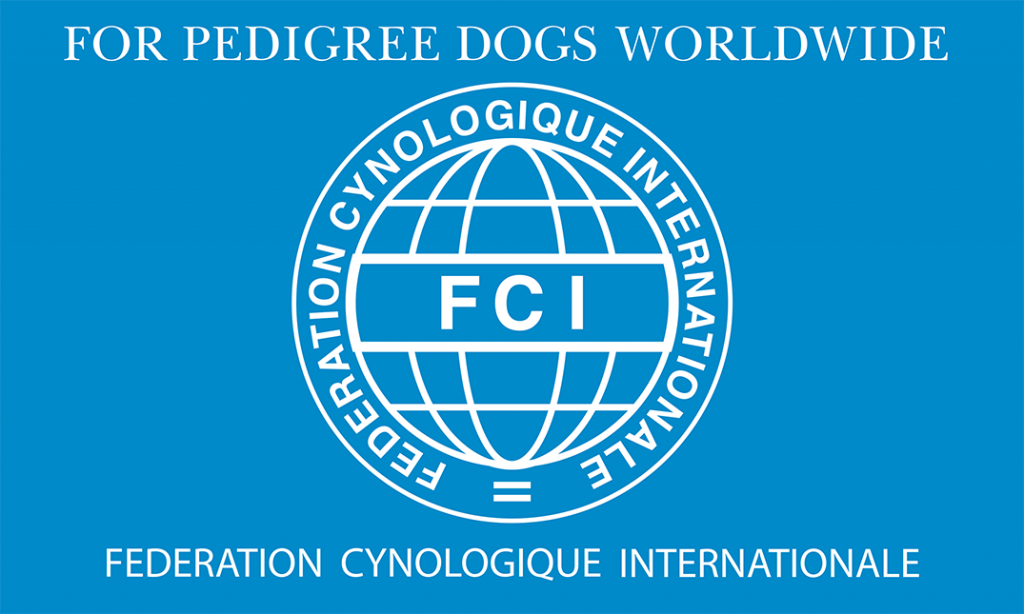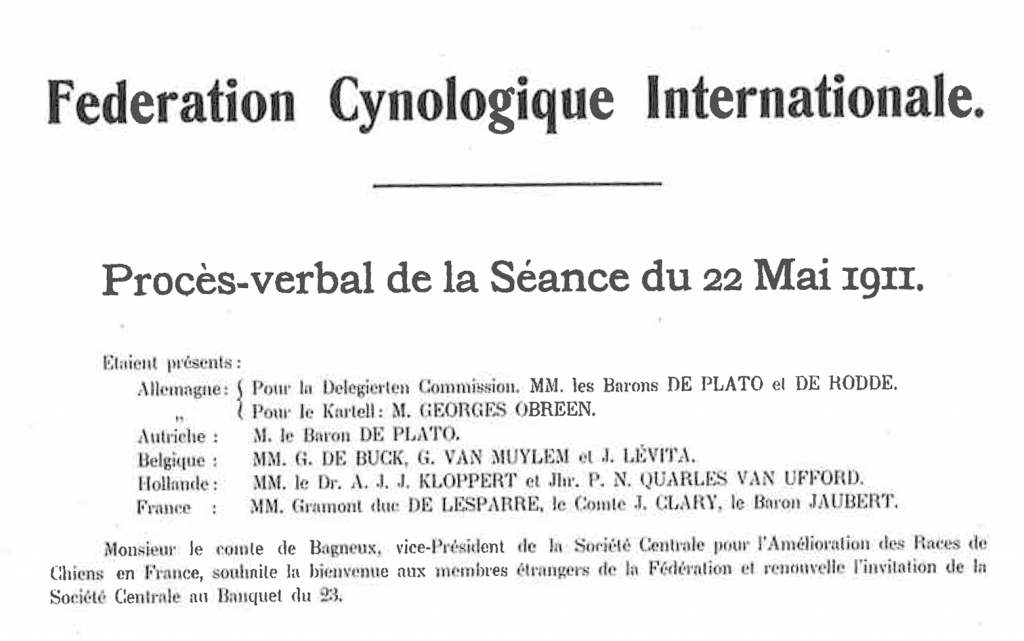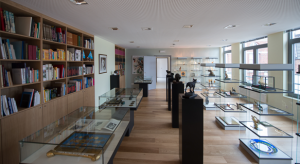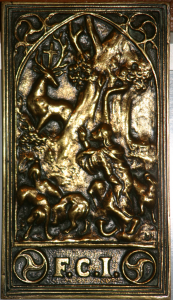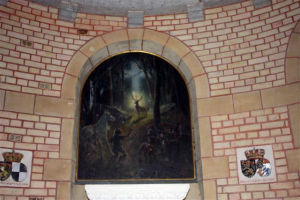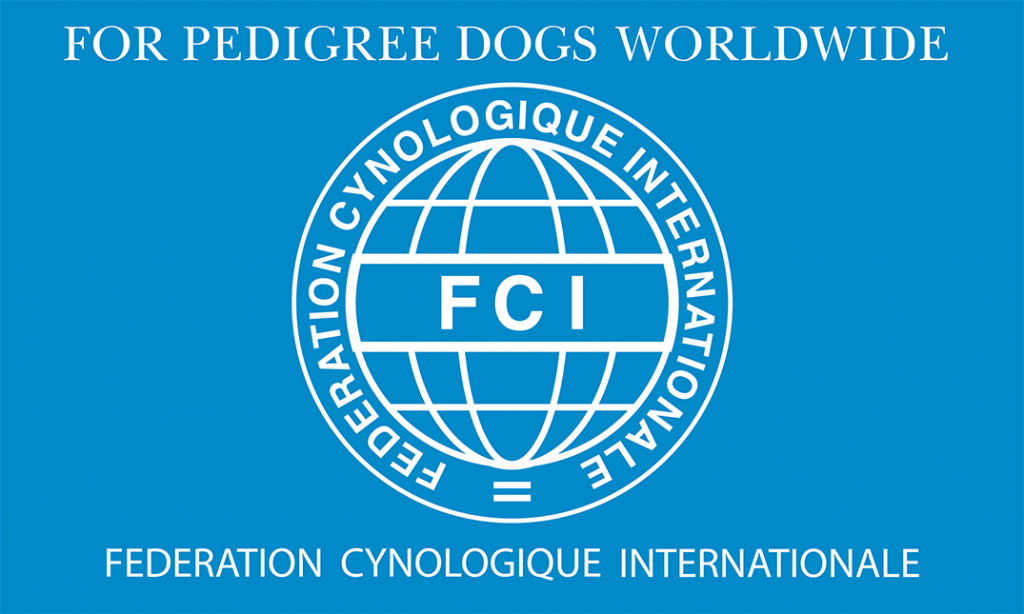
It took until 10 April 1921 for a meeting reconstituting the FCI to be held in Paris, with work resuming under the presidency of the Duke of Lesparre. The Société Centrale Canine pour l’Amélioration des Races de Chiens en France is represented by the Count Clary, Duke of Lesparre and Baron Jaubert; the Société Royale Saint-Hubert is represented by Baron Houtart and Mr V. Du Pré. The Assembly unanimously approves the Statutes and Regulations of the Fédération Cynologique Internationale and declares the foundation of the Federation.
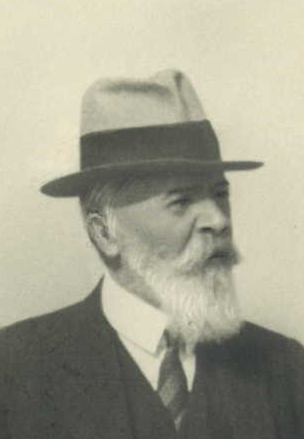
The fee per event due to the FCI is set to 100 BEF (2.5 €) and the membership fee amounts to 500 BEF (12.5 €). At the end of the Assembly, Count Clary is elected President and Baron Houtart, Secretary-Treasurer. Thanks to his efforts, his activity and capability, the Fédération Cynologique Internationale will have a great future.
In June 1921, the first two CACIB shows organised after the re-creation of the FCI take place in Brussels, a total of eleven CACIB’s are awarded. In addition, the same year, the first CACIT competitions are held in Corroy-le Château (Belgium) and 1 CACIT is awarded.
On May 28th, 1922 in Paris, the FCI President, Count Clary, opens the meeting with the following words: “Over the last seven years, our Fédération Cynologique Internationale, first in a state of lethargy, then dissolved, has lived on memories of the past, nourishing the hope of being reborn. In the silence of the war years, it seemed that all social life had stopped breathing. It gives us great pleasure to have resurrected our Federation and started its heart beating regularly again on 10 April 1921.”
The Société Royale Saint-Hubert and the Société Centrale pour l’Amélioration des Races de Chiens en France are the two associations responsible for reconstituting the FCI, helping it to regain its position and expand its work for the future of cynology.
The Dutch Raad van Beheer immediately joins in, with Spain and Italy soon to follow.
The following national associations are present at the meeting:
The Société Centrale pour l’Amélioration des Races de Chiens en France, represented by the Duke of Lesparre, Count Clary and Baron Jaubert;
The Société Royale Saint-Hubert, Union des Sociétés Canines de Belgique, represented by Mr Du Pré and Mr Albert Houtart;
The Raad van Beheer op Kynologisch Gebied in Nederland, represented by Mr G.J. van der Vliet;
The Real Sociedad Central de Fomento de las Razas Caninas en España, represented by Mr Albert Houtart;
The Kennel Club Italiano, represented by Mr Houtart.
At this meeting the members decide to create a special category of members – the so-called “associate members” – for national canine associations from countries which, due to their distance or other valid reasons, are not able to become full FCI members. Such associated members would only be bound to the Federation by the text and within the limits of specific mutually adopted agreements, including the joint recognition of pedigrees, kennel names and sanctions. Associated members would not be represented on the FCI general committee and they would only be allowed to take part in General Assemblies in a consultative capacity.
At this meeting it is pointed out that two sanctions have been taken by the Société Royale Saint-Hubert and sent to member organisations, one for a “false declaration in the drafting of a pedigree”, the other for “incorrect behaviour towards a judge in the exercise of his duties”. Things haven’t changed much since then! The 1922-23 presidency is unanimously awarded to Mr Du Pré, the 1st vice-president of the Société Royale Saint-Hubert, with Mr G.J. van der Vliet, president of the Raad van Beheer as vice-president.






